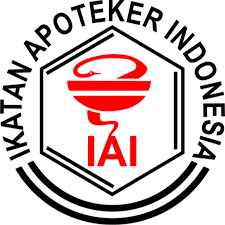Immunomodulatory Activity of Kasumba Turate (Carthamus tinctorius L.) Extract Against Non-Specific and Specific Immune Responses in Mice
Arini Fadhilah(1*), Anisa Dwi Parwati(2), Cita Hanif Muflihah(3), Arifah Sri Wahyuni(4)(1) (SCOPUS ID: 57191632830) Faculty of Pharmacy, Universitas Muhammadiyah Surakarta
(2) Faculty of Pharmacy, Universitas Muhammadiyah Surakarta
(3) Faculty of Pharmacy, Universitas Muhammadiyah Surakarta
(4) Faculty of Pharmacy, Universitas Muhammadiyah Surakarta
(*) Corresponding Author
Abstract
Immunomodulators are compounds that can regulate the immune system with the objective of normalizing or helping to optimize the immune system. People tend to back to nature by utilizing various plants to be used as medicine, one of which is kasumba turate (Carthamus tinctorius L.) which is thought to be efficacious as an immunomodulator in increasing the activity and capacity of macrophages. This study aims to determine the immunomodulatory activity of kasumba turate ethanol (CTEE) extract against non-specific and specific immune responses in mice. Non-specific immune response tests using the carbon clearance method were carried out on mice with 3 dose ratings. Specific immune response tests were carried out by the hemagglutination test method to determine antibody titers. The results of the carbon clearance test showed that the CTEE dose 50 mg/KgBW was a moderate immunostimulant with a phagocytic index of 1.41, while doses of 100 and 200 mg/KgBW were strong immunostimulants with phagocytic index of 1.57 and 1.82 respectively. While the results of the hemagglutination test method, the antibody titers value is determined from the highest serum dilution value that still indicates hemagglutination. The results show an increase in humoral immune response with the highest primary and secondary antibody titer values of 1:256 and 1:1024 for doses of 100 mg/KgBW, and 1:512 and 1:1024 for doses of 200 mg/KgBW. Phytochemical screening results of CTEE proved to contain alkaloid group compounds, flavonoids, saponins, tannins and triterpenoids. Based on the results obtained, it was concluded that the administration of CTEE showed immunostimulant activity.
Keywords
Full Text:
PDFReferences
Effendi N. and Widiastuti H., 2014, Identification of Immunoglobulin M (IgM) Activity of Ethanolic Extract of Ceplukan Leaves (Physalis minima Linn.) In Mice, Journal of Health, VII (2), 353–360.
Faradilla M. and Iwo M.I., 2014, Immunomodulatory Effect of Polysaccharide from White Turmeric [Curcuma zedoaria (Christm.) Roscoe)] Rhizome, Indonesian Journal of Pharmaceutical Sciences, 12 (2), 273–278.
Ganeshpurkar A. and Saluja A.K., 2017, Experimental animal models used for evaluation of potential immunomodulators: A mini review, Bulletin of Faculty of Pharmacy, Cairo University, 55 (2), 211–216.
Harborne J.B., 1987, Phytochemical methods: a guide to modern ways of analyzing plants, Padmawinata, K. &; Soediro, I., eds., ITB Press, Bandung.
Ismail A., Nastity H. G. and Surwanti B., 2015, Test of Immunomodulatory Effects of Combination of Kasuma Turate Ethanol Extract (Csrthamus tinctorius L.) and Black Cumin Ethanol Extract (Nigella sativa), UIN Alaudin Journal of Pharmacy, 3 (4), 187–192.
Iwo M.I., Soemardji A.A., Retnoningrum D.S. and Sukrasno, 2000, Immunostimulating effect of pule (Alstonia scholaris L.R.Br., Apocynaceae) bark extracts, Clinical Hemorheology and Microcirculation, 23 (2–4), 177–183.
Khadijah S., 2017, Immunomodulatory Effects of n-Hexan Fraction of God's Crown Leaf (Phaleria macrocarpa (Scheff) Boerl) Against Hypersensitivity Response and Antibody Titer of Male Mouse Immune Cells,. University of North Sumatra.
Lee S.-H., Lillehoj H.S., Heckert R.A., Cho S.-M., Tuo W., Lillehoj E.P., Chun H.-K. and Park H.-J., 2008, Immune Enhancing Properties of Safflower Leaf (Carthamus tinctorius) on Chicken Lymphocytes and Macrophages, The Journal of Poultry Science, 45 (2), 147–151.
Masruri T. and Harijanti K., 2017, Management of Pemphigoid Mucous Membrane (MMP) Triggered by Herbal Medicine, Insisiva Dental Journal, 6 (2), 49–56.
Pandey A. and Tripathi S., 2014, Concept of standardization, extraction and pre phytochemical screening strategies for herbal drug, Journal of Pharmacognosy and Phytochemistry, 2 (5), 115–119.
Puspitaningrum I., Kusmita L. and Franyoto Y.D., 2017, Immunomodulatory Activity of Ethyl Acetate Fraction of Som Jacawa Leaves (Talinum triangulare (Jacq.) Willd) Against Specific Immune Responses, Journal of Pharmaceutical Sciences & Clinical Pharmacy, 14 (1), 24–29.
Putri R.R.R.F., Ulfa E.U. and Riyanti R., 2014, Antiplatelets activity of red cabbage ethanolic extract (Brassica oleracea var. capitata L.), Health Library, 2 (1), 111–114.
Rahmania F.J. and Husni P., 2017, Potential Carboxymethyl Cellulose (CMC) Sourced from Hyacinth Plant (Eichhornia crassipes (Mart.) Solms) as Pharmaceutical Excipient, SCIENTIA Journal of Pharmacy and Health, 7 (2), 141–150.
Rao T.K.S., Mohanty T.K. and Bhakat M., 2017, Levamisole as an immunomodulator to ameliorate vaccination stress in crossbred bulls, Indian Journal of Animal Sciences, 87 (7), 840–843.
Restuati M., 2015, Study of Immunostimulant Activity of Wild Leaves (Premna pubescens. Blumue) in White Rats (Rattus norvegicus), . University of North Sumatra.
Suhirman S. and Winarti C., 2010, Prospects and Functions of Medicinal Plants as Immunomodulators,
Sukmayadi A.E., Sumiwi S.A., Barliana M.I. and Aryanti A.D., 2014, The Immunomodulatory Activity of Ethanol Extract of Tempuyung Leaves (Sonchus arvensis Linn.), Indonesian Journal of Pharmaceutical Science and Technology, 1 (2), 65–72.
Suwartini N.K., Kencana G.A.Y. and Suartha I.N., 2018, Immune response of laying hens after Newcastle Disease vaccination on commercial farms in Denbantas Village, Tabanan District, Indonesia Medicus Veterinus, 7 (3), 185–193.
Utami Y.P., Aliyah and Syukur R., 2016, Immunostimulant Effect Combination Syrup of Carthamus tinctorius L. and Eleutherine palmifolia Extracts on Mice (Mus musculus), JST Health, 6 (2), 179–184.
Wagner H., Kraus S. and Jurcic K., 1999, Search for potent immunostimulating agents from plants and other natural sources, In Wagner, H., ed. Immunomodulatory Agents from Plants, Birkhäuser Basel, pp. 1–39.
Article Metrics
Abstract view(s): 450 time(s)PDF: 412 time(s)
Refbacks
- There are currently no refbacks.









